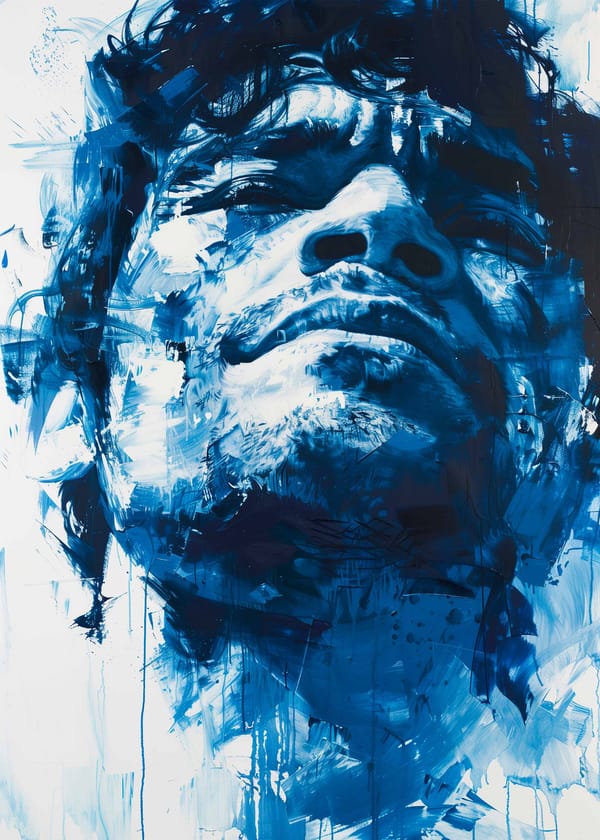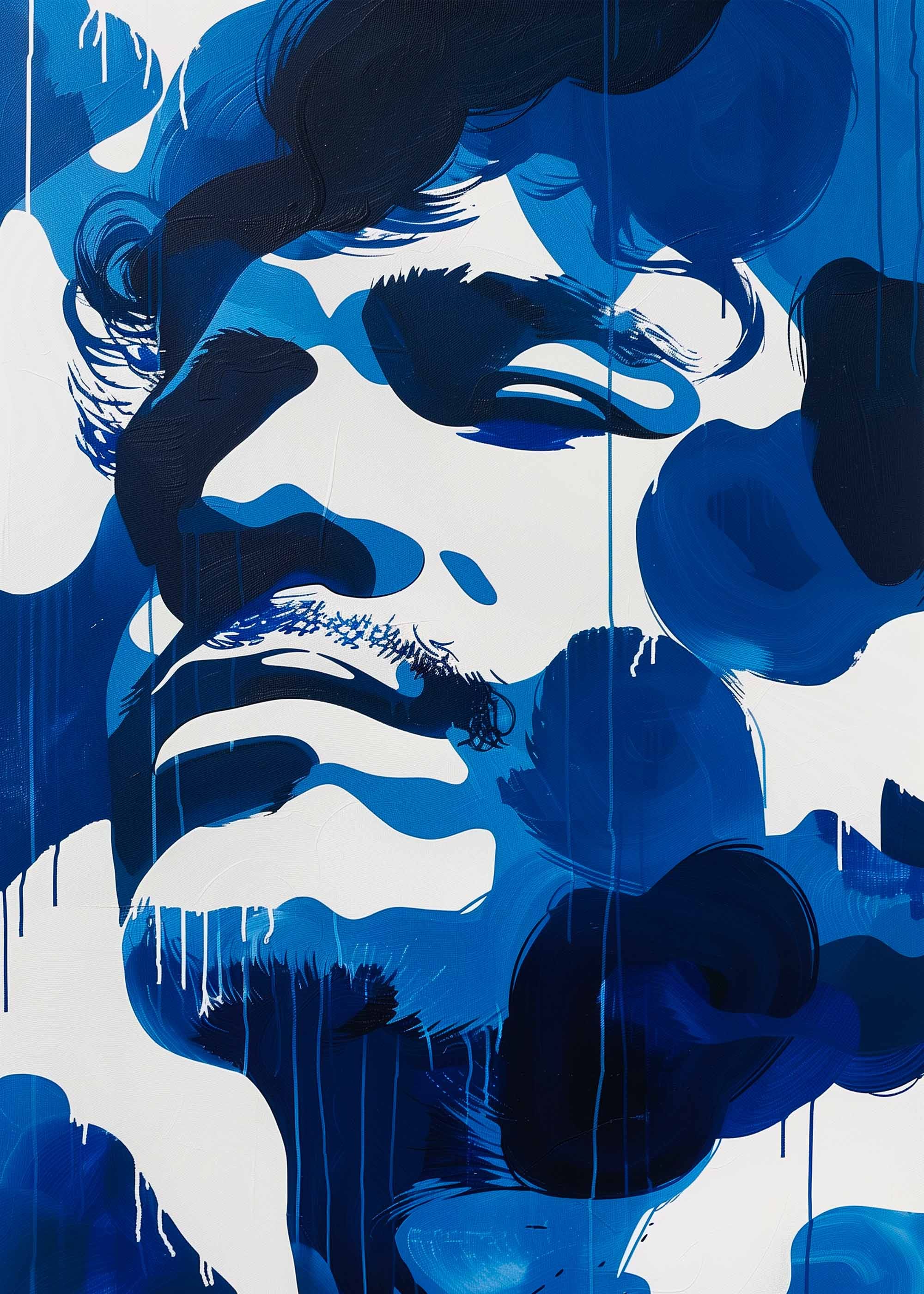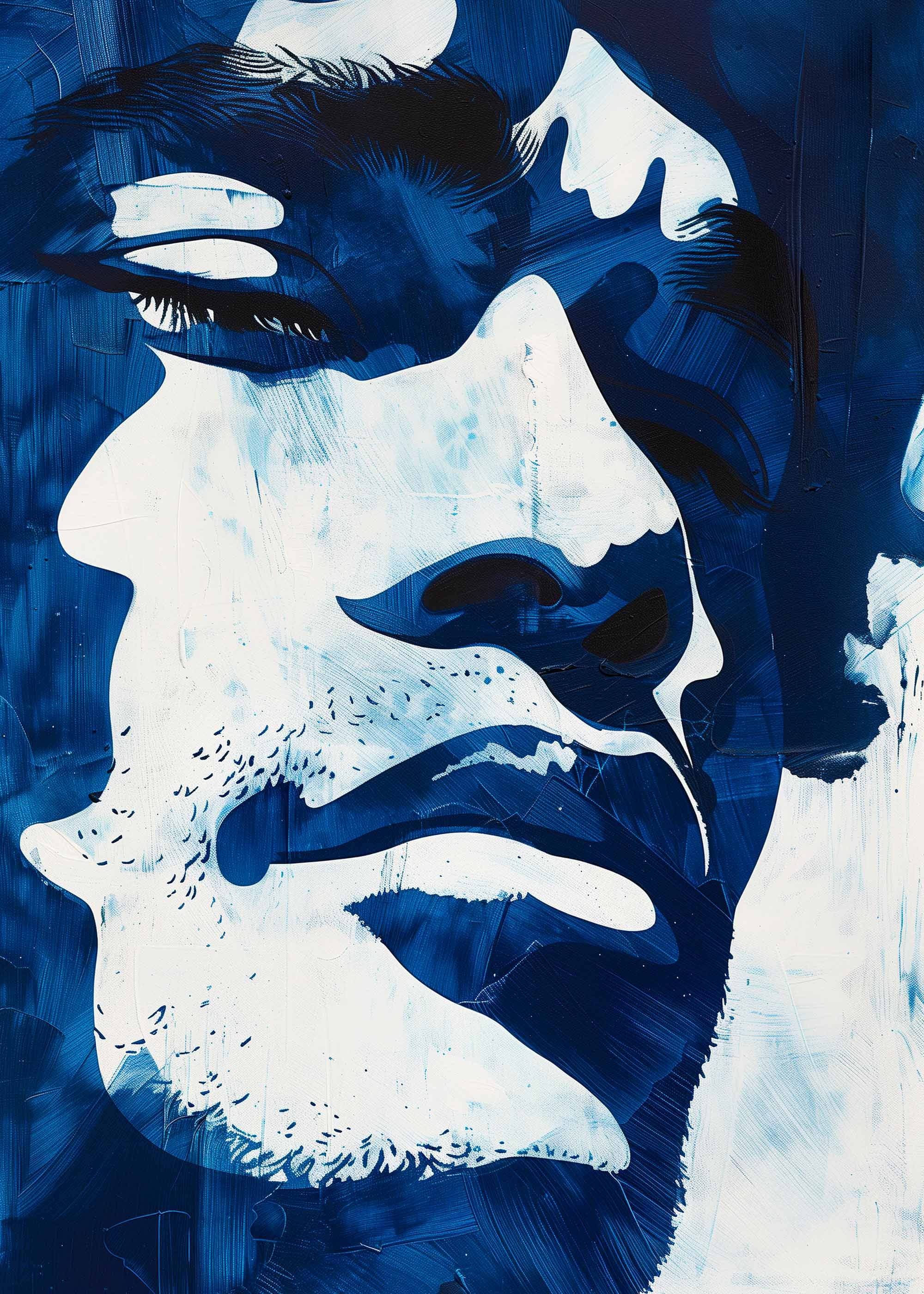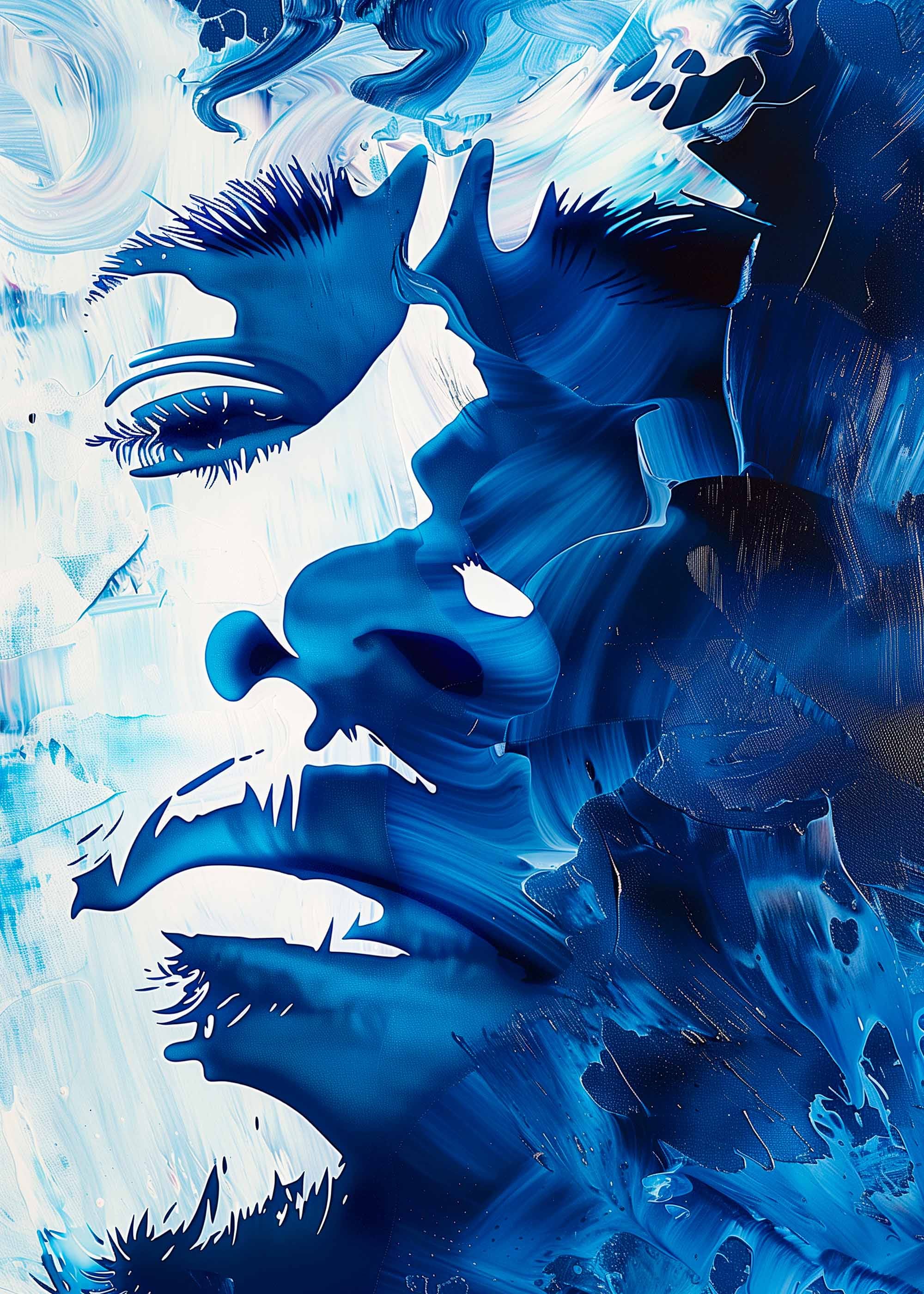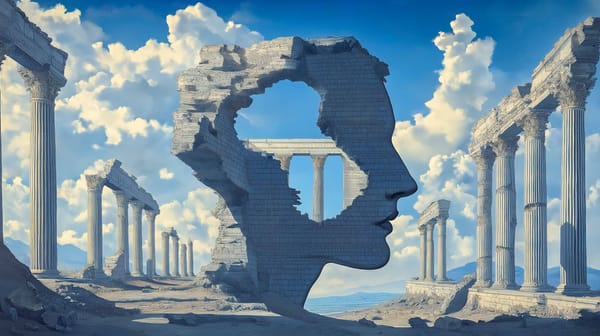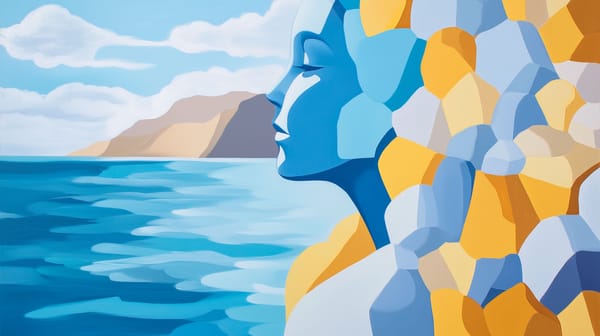The tale of Diego Maradona and Napoli is one of the most iconic love stories in the football world. This connection transcends the boundaries of sport and enters the realm of culture, identity, and immortality. It is the story of a city that embraced an Argentine genius, a player who gave his heart to the people, and the transformation of an underdog team into a symbol of pride and glory. To truly appreciate the bond between Maradona—known as "D10s" for his legendary status and his jersey number—and Napoli, we must delve into the rich history of his time in Naples and the legacy that remains forever etched in the hearts of the Neapolitans.
A City in Need of a Hero
In the 1980s, Naples was a city struggling with its share of problems. Located in southern Italy, Napoli was often looked down upon by the wealthier cities in the north, such as Milan and Turin. Poverty, social issues, and a lack of infrastructure were all pressing problems. Still, perhaps the most significant burden for the people of Naples was the negative stereotype they faced—a deep-seated prejudice against the South that relegated them to second-class citizens in their own country.
Napoli's football team, Società Sportiva Calcio Napoli (SSC Napoli), epitomized this struggle. Before Maradona's arrival, they had never been considered severe contenders in Serie A. The likes of Juventus, AC Milan, and Inter Milan, financially buoyed by wealthy owners and a broader support base, often dominated the Italian league. Napoli, a provincial team with modest means, did not have the star power to compete.
The people of Naples needed hope, a symbol of resilience, and a hero to rally around. That hero came from Argentina—a small, stocky genius who had grown up in the shantytowns of Villa Fiorito, a player with a left foot that could make magic on the field. In 1984, Diego Armando Maradona arrived in Naples from FC Barcelona, and with him came the promise of greatness and redemption for an entire city.
The Arrival of the Messiah
Maradona arrived in Naples as a controversial figure. During his time in Barcelona, he had been fraught with injury, disciplinary issues, and disagreements with management. Despite his immense talent, Barcelona had failed to harness his genius. When Napoli signed him for a then-world record fee of £6.9 million in a move that stunned the footballing world, it was seen as a gamble by many. To others, it was the dawning of something special.
For the people of Naples, it was nothing short of the arrival of a savior. The passion, emotion, and belief that Maradona brought with him were infectious. On July 5th, 1984, over 75,000 fans filled the Stadio San Paolo to welcome Maradona. This wasn't just the introduction of a new player—it was the beginning of a love affair where both the player and the city gave each other everything they had.
The expectations were massive, but Maradona was no ordinary player. His presence on the field was electric, and his passion matched the intensity of the Neapolitan spirit. From the outset, it was clear that Maradona wasn't merely playing for Napoli—he was playing for the people of Naples, for their pride and joy.
Transforming Napoli
Maradona's impact on the pitch was almost immediate. He inspired a struggling Napoli side to fight against the giants of Italian football. The battles on the field were often more than just football matches—symbolic of the broader social struggle between the North and the South. When Napoli faced Juventus, it wasn't just a contest between two teams; it was the South against the wealth, power, and perceived arrogance of the North. The stakes were higher than just winning trophies; they were about honor and recognition.
The 1986-87 season was Maradona's crowning glory. Under his leadership, Napoli achieved the impossible: they won the Scudetto, the first Italian league title in the club’s history. The city erupted in joy. People poured into the streets, dancing, crying, and celebrating for days. Murals of Maradona appeared on buildings throughout Naples, depicting him not just as a footballer but as a saint—a protector of their city. The phrase "D10s" was coined, a play on his jersey number 10 and the Spanish word for God, "Dios."
Napoli also won the Coppa Italia that same season, completing a historic double. It was the culmination of years of struggle, and it was all thanks to Maradona’s magic. He had given Naples something they had longed for—validation, pride, and the ability to stand tall against the rest of Italy.
Maradona continued to lead Napoli to success. 1989 Napoli won the UEFA Cup, marking their first major European triumph. This historic achievement underscored Maradona's ability to elevate the team and the city. The 1989-90 season saw Napoli win their second Scudetto, solidifying Maradona's status as an eternal icon in Naples.

A Love Beyond Football
Looking beyond the football field is essential to understanding why Maradona's connection with Napoli runs so deep. Maradona embodied the hopes and dreams of the people of Naples. He was outspoken, fearless, and unapologetically himself—qualities that resonated with a community that had long been marginalized and patronized by the rest of Italy.
Maradona was also a vocal critic of the power structures in Italian football, frequently calling out favoritism toward the wealthy northern clubs. He embraced Naples's underdog status, and the people embraced him as their own. He attended local events, visited neighborhoods, and immersed himself in the culture of Naples. The relationship was reciprocity—Maradona gave his best on the pitch, and the city gave him unconditional love.
Maradona’s tenure at Napoli was not without its struggles. His personal life was often mired in controversy—his associations with the Camorra (the Neapolitan mafia), his battles with substance abuse, and his tumultuous relationship with the media. Yet, even in his lowest moments, the people of Naples stood by him. They saw in Maradona a reflection of their struggles, flaws, and resilience. He was not perfect, but he was theirs, and that was enough.
Maradona's off-the-pitch life became a spectacle in its own right. The media scrutinized his every move, and his associations with the Camorra became fodder for endless headlines. Despite the constant attention and criticism, Maradona continued to play with unyielding passion. He found solace on the pitch, where the crowd's roar drowned out the noise of his personal life. To the people of Naples, he was more than a star; he was a beacon of hope in a world filled with uncertainty and struggle.
The Fall and Departure
After years of glory, the fairytale began to unravel. By the early 1990s, Maradona's problems had begun to take their toll. His dependence on drugs and his erratic behavior started affecting his performance on the pitch. In 1991, Maradona tested positive for cocaine, leading to a 15-month suspension from football. It was a crushing blow for Napoli and Maradona himself.
1992 Maradona left Napoli, ending the club's most glorious chapter. Despite his bitter departure, the bond between Maradona and Napoli remained unbroken. The people understood the pressures associated with his brilliance and never turned their backs on him. His departure marked the beginning of a period of decline for Napoli, but the memories of the golden era lived on.
The departure was bittersweet. Maradona had given everything he could to Napoli, but his demons were catching up. He left behind a city that adored him, a club that he had led to unprecedented glory, and fans who would never forget the joy he brought to their lives. Maradona's decline continued after he left Naples, but his legend only grew. Even as he struggled, the people of Naples remembered him as the hero who had lifted their spirits, the champion who had given them a sense of pride.
The Legacy of D10s
Maradona's impact on Napoli and Naples cannot be measured merely by the titles he won. His influence went beyond football; it was cultural, emotional, and deeply personal. The murals, chants, and stories passed down from generation to generation bear witness to Maradona's indelible mark on the city.
When Maradona passed away on November 25th, 2020, the world mourned the loss of one of the greatest footballers in history. But in Naples, it was something more. It was the loss of a family member, a friend, a symbol of hope. The city went into mourning, and tributes poured in from every corner of Naples. The Stadio San Paolo, the stadium where Maradona had given the people of Naples their most incredible memories, was renamed Stadio Diego Armando Maradona in his honor.
For the people of Naples, Maradona was not just a player but a symbol of their identity. He represented the fight against adversity, the refusal to bow down, and the joy of overcoming the odds. He was and forever will be "D10s" to them—a god who walked among them and gave them a taste of heaven.
Murals of Maradona appeared overnight, candles were lit in his honor, and tears were shed as fans gathered to remember their hero. His face adorned balconies, walls, and even churches, an eternal reminder of his impact on the city. For the people of Naples, Maradona was not just a footballer; he symbolized their struggle, passion, and hope. His legacy was cemented in the trophies he won and how he touched millions' lives, giving them a reason to believe in the extraordinary.
Napoli After Diego
In the years following Maradona's departure, Napoli experienced ups and downs. Financial difficulties led to the club's relegation and eventual bankruptcy in 2004. However, Maradona's spirit seemed to linger, guiding the club through the toughest times. Under new ownership, Napoli rose from the ashes, climbing back into Serie A and once again becoming a competitive force in Italian football.
The resurgence of Napoli in the 2010s brought hope back to the fans. Players like Edinson Cavani, Marek Hamšík, and Lorenzo Insigne carried the team forward, drawing inspiration from the legacy left by Maradona. In the 2019-20 season, Napoli won the Coppa Italia, and in the 2022-23 season, they managed to win their third Scudetto, ending a long title drought. The shadow of Maradona loomed large over every triumph, and the players and fans alike always paid tribute to the original hero who had put Napoli on the map.
The road to resurgence was not easy. Napoli faced financial collapse, a drop to the lower leagues, and a struggle to regain their place among Italy's elite. But the spirit of Maradona never left the city. His legacy inspired new generations of players and fans, and the passion he ignited in the 1980s continued to burn brightly. Napoli's rise back to the top was a testament to the enduring spirit Maradona had instilled in the club and its supporters. The players who donned the Napoli shirt knew they were playing not just for a club but for a legacy defined by the greatest players ever to wear their colors.
When Napoli won their third Scudetto in 2023, the celebrations were reminiscent of the days of Maradona. The streets were filled with fans celebrating, singing songs of Maradona, and paying homage to the legend who had made it all possible. The triumph was a reminder that, though Maradona was gone, his spirit lived on in every victory, goal, and cheer that echoed through the Stadio Diego Armando Maradona.
The Eternal Bond
To this day, the love story between Maradona and Napoli remains unparalleled. His murals still adorn the streets, his name is still sung in the stands, and his image symbolizes hope, defiance, and magic. The bond transcends the sport itself; it has become a part of the city’s DNA. Napoli may have had great players before and after Maradona, but none have captured the hearts of the Neapolitan people quite like "El Pibe de Oro."
Maradona’s time in Naples was brief in the grand scheme of things—just seven years—but his impact was everlasting. He came to a city needing a hero and gave them the greatest years of his career. In return, the people of Naples gave him the kind of love and adoration that few athletes have ever experienced. The connection was not based on trophies alone but on a shared spirit—a spirit that, even in moments of darkness, found joy and hope through football.
The bond between Maradona and Napoli was not just that of a player and a club; it was a relationship defined by mutual love and respect. Maradona gave the city of Naples hope and a reason to dream, and the people, in turn, gave Maradona a home where he could be himself—flawed, passionate, and brilliant. The love that the people of Naples had for Maradona was unconditional. He represented their struggles, their dreams, and their victories. He was one of them, and that bond was unbreakable.
D10s, Forever in Our Hearts
Diego Maradona and Napoli will forever be intertwined. The club has retired his number 10 shirt and immortalized his name in the stadium, and his spirit lives on in the hearts of every Napoli supporter. The story of Maradona and Napoli is not just about football—it is about identity, love, struggle, and triumph. It is about how one man’s brilliance lifted an entire city and how that city, in turn, embraced him with open arms.
Maradona's influence extended far beyond the football pitch. He inspired a generation to believe that anything was possible and that even the most marginalized could achieve greatness with passion and determination. His legacy lives on in the streets of Naples, the children who grow up idolizing his murals, the songs sung in his honor, and the hearts of those who remember the joy he brought to the city. For the people of Naples, Maradona will always be a symbol of hope, a reminder that magic can happen even in the most unexpected places. Long live D10s, forever in our hearts, the eternal king of Naples.

